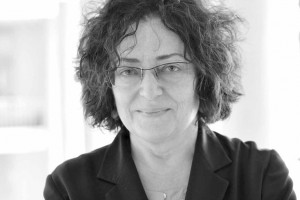Přidejte se k nám na Facebooku!
Author Archives: Karolína Heroldová
Niels Seidl
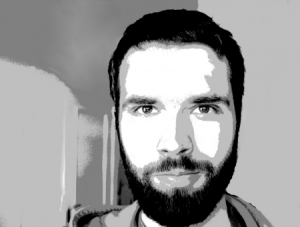
Niels Seidel studied computer science and multimedia at Ulm University. Currently he is working as a research associate at the International Institute at Dresden University of Technology. His research spans hypervideo, video- based learning environments, human computer interaction and design patterns, with recent interests in educational data mining, data visualization and scripted collaboration. Beside his technology-inspired work he is locally known as an author of a book about the Groß-Rosen sub-camp in Görlitz.
Project “Theresienstadt explained”
The project “Theresienstadt explained” aims to make the film “Theresienstadt: Eine Dokumentation aus dem Jüdischen Siedlungsgebiet” accessible for learning purposes. Therefore we try to identify people, places and the intrinsic propaganda in relation to its temporal appearances. As a result the film shall become augmented and therefore easier comprehensible for those who are not familiar with the depicted information and hidden meanings. For educational purposes we aim at three use cases: (1) supporting interactive live screenings by navigational aids and augmented data (e.g. at the memorial state or at the volunteer-led Youth Centre in Terezin); (2) individual self regulated learning in the web for an international audience; (3) scripted collaborative learning in small groups by analysing and discussing the film in a classroom. So far we obtained a high quality reproduction of the film from the German Federal Archive in Berlin that we rearranged according the original screenplay. At present 47 persons have been identified and almost described with biographical data or even short biographies. Currently we are developing a video learning environment that incorporates the film-related information along various navigational dimensions. Users are able to browse single scenes and identified persons. The perception of the film is aided by a table of contents (scenes), highlighted persons and a adjustable playback speed. In the next step we are going to contrast locations of the filming in 1944/45 with today’s views supplemented by a map.
The organisation and software development is resided at the International Institute Zittau at Dresden University of Technology. Currently the volunteers at the Terezin Youth Centre are cooperating in the content production. Finally members of the sociocultural centre Hillersche Villa in Zittau that once inspired the project participating and supporting “Theresienstadt explained” in many different ways.
Petr Koura
Swinging in the Ghetto. Swing-Musik and Swing-Musicians in Theresienstadt
It was not only classical music but also swing that was played in the Theresienstadt. Its most famous band, the Ghetto Swingers, became later a legend among jazz fans. Owing to the fact that the Nazi propaganda took advantage of the band, a record of one of its songs has been preserved. The contribution will introduce both the history of this exceptional band and life stories of its protagonists (Fritz Weiss, Martin Roman, Eric Vogel), based on a recent interview with the last living member of the Ghetto Swingers, ninety-year old jazz guitar player Coco Schumann. The history of the group will be presented in the context of jazz music exploited by the Nazi propaganda.
prof. Dr. Gertrud Koch
Dr. Tomasz Łysak
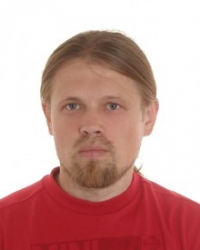
Affiliation / Profession: University of Warsaw
Research interests: Holocaust representation in various media, film, photography, psychoanalysis, trauma studies
Current research project: “From Newsreel to Post-traumatic Film: Documentary and Artistic Films about the Holocaust” sponsored by Narodowe Centrum Nauki (National Centre for Science)
Latest publications: “On the Impossibility of Believing in the Documentary. Dariusz Jabłoński’s Photographer,” Kwartalnik Filmowy, special issue 2013, 130-31. “Reconstruction or Creation? The Liberation of a Concentration Camp in Andrzej Wajda’s Landscape After Battle,” Slovo vol. 25 no. 1 2013, 31-47. „Strategies of Recall: Post-1989 Polish Documentary and Artistic Films on the Holocaust,” in Erkundungen, Verhandlungen, Interventionen: Wie in Ostmitteleuropa nach 1989 an den Holocaust erinnert wird (Literatur, Kunst, Film, Alltag), Kadmos, Berlin 2010, .
Dr.phil. Günther Agde
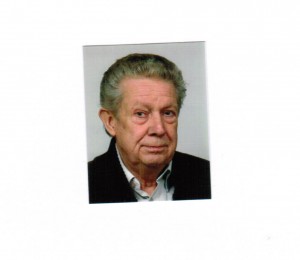
Affiliation / Profession: Film historian, Dr. phil. Long-time research fellow of the Berlin Akademie der Künste (Academy of Arts), co-founder and long-time member of both the CineGraph Babelsberg e.V. association and the Filmblatt magazine editorial team.Visiting scientist at the ZZF Potsdam, teaching assignments at the Freie Universität Berlin, the Humboldt-Universität Berlin and the Filmuniversität Babelsberg (substitute teacher). Co-curator of the 2012 Berlinale Retrospective “Die rote Traumfabrik“.
Publications:Numerous reviews, essays, interviews and other publications on German film history, DEFA, film exile and topics of contemporary history, e.g. “Die rote Traumfabrik” for the eponymous Berlinale Retrospective (which received the International Willy Haas Award in Hamburg).
Günther Agde
The Second Moment of Freedom: First versions of the Buchenwald films of the U. S. Signal Corps, April 1945
In April 1945, the camera crew of the U. S. Signal Corps were making a film after the liberation of the Buchenwald concentration camp. They followed closely behind the fighting troops and entered the camp immediately after them. While exploring the large area, the camera crew filmed everything they saw. The random nature of the recording reflected the situation in the camp.
Notable scenes from this material have been shown in numerous documentaries about Buchenwald, defining the iconography of concentration camps over decades. However, there are many sequences that have not been used.
I will present the unedited film they shot, ‘camera rushes’, and discuss the immediacy of this ‘objective’ filming.
Juraj Herz
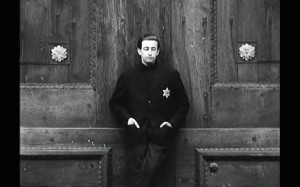 Director, screenwriter and actor Juraj Herz was born on September 4, 1934 in Kežmarok, Slovakia. In 1943, he and his parents were deported to the Ravensbrück concentration camp. Fortunately, the whole family survived, Juraj was liberated in Sachsenhausen.
Director, screenwriter and actor Juraj Herz was born on September 4, 1934 in Kežmarok, Slovakia. In 1943, he and his parents were deported to the Ravensbrück concentration camp. Fortunately, the whole family survived, Juraj was liberated in Sachsenhausen.
After the war he studied photography in Bratislava, later puppetry Faculty of Academy of Performing Arts directing and acting (DAMU) in Prague – in the same year as Jan Švankmajer with whom he also worked at the theatre Semafor. His debut as an actor happened in the film Každá koruna dobrá / Every Little Helps (1961) directed by Zbyněk Brynych. Brynych offered him a place as an assistant and an actor in the film Transport z ráje / Transport from Paradise (1962).
In 1965 Herz directed his short film Sběrné surovosti / Scrap Brutalities (1965) which is regarded as the most adequate film adaptation of Hrabal`s prose. This film originally was made for the anthology of films Perličky na dně / Pearls of the Deep, often called a manifesto for the Czechoslovak New Wave. In the following years he shot films in different genres: political horror (Spalovač mrtvol / The Cremator, 1968), a film which was very successful with the audiences of 1969, psychological drama (Petrolejové lampy / Oil lamps, 1971 with Iva Janžurová), the post-invasion year, horror film (Upír z Feratu / The Vampire from Ferat, 1981 with Dagmar Veškrnová / Havlová whom Herz discovered for the movies) or a stylized Gothic story (Morgiana, 1972). World War II is treated in several of his works. His last work, Habermannův mlýn/Habermann’s Fate (2010), approaches the topic of the expulsion of Sudeten Germans.
In 1987 Herz emigrated to West Germany. He shot modern fairytales (Žabí princ/The Frog Prince, 1991) and created documentary films and TV serials for various TV companies in Germany, Austria, France and USA. Since the early nineties he works both in the Czech Republic and abroad. He has won numerous prestigious national and international awards, including The Chrystal Globe for his Outstanding Artistic Contribution to World Cinema at the festival in Karlovy Vary in 2009.
Thomas Tode
A teardrop on the cheek of time. Henri Cartier-Bresson’s film about the camps Le Retour
One of the most moving documents of human agony and joy to emerge from World War II, Le Retour follows the liberation and homeward journey of French prisoners from Nazi concentration camps from April to July 1945. From their disbelieving, sunken faces to the hospital recoveries and finally to their journey home by foot, truck, and plane, the camera captures their profound expressions of fear, anticipation and bliss. Confrontations at the border checks, the U.S. airlift over France, and the tentative smiles on the men’s faces as they arrive by train and watch for familiar faces are rendered unforgettably by Cartier-Bresson’s adroit camera. By concentrating on this single event, he has said more about the separation and destruction of war than hours of combat footage. ‘In the face of great catastrophe and human tragedy’, says film historian Richard Barsam, ‘the artist is often mute; in reflection he finds that simplicity is the only technique by which to capture the magnitude of the events before him. Cartier-Bresson is such an artist.
PhDr. Petr Koura Ph.D.
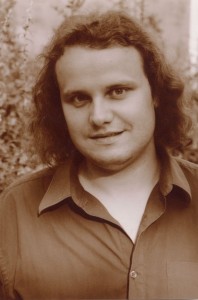 Affiliation / Profession: Historian, researcher at the Institute of Czech History, Faculty of Arts, Charles University
Affiliation / Profession: Historian, researcher at the Institute of Czech History, Faculty of Arts, Charles University
Research interests: Czech history in the 20th century, history of the Protectorate of Bohemia and Moravia, political trials in the 1950’s, Czech-German relations in the 20th century, remembrance culture, film with historical themes, swing music in the Protectorate of Bohemia and Moravia
Current research project:The Second Life of the Protectorate of Bohemia and Moravia. A Contribution to the Czech Remembrance Culture of the Second World War.
Latest publications:
Přes taneční kursy do ilegality. Tanec v protektorátu a jeho postihování. In: Dějiny a současnost, Vol. 35 (2013), Nr. 8, ISSN 0418-5129, p. 14–17
La campagne de propagande qui accompagna le procés politique de »Milada Horáková et Cie« (with Pavlína Kourová). In: Cahiers du CEFRES, n° 32. Individus sous contrôle. Prague 2012, CEFRES, ISBN 978-80-86311-26-5, p. 59–103
Odbojová činnost Julia Fučíka ve světle (nejen) nacistických dokumentů. In: Podhajský, F. A. (ed.): Julek Fučík, věčně živý! Host, Brno 2012, ISBN 978-80-7294-436-1, p. 43–61
„Škvorecký se nikdy nepřátelsky k lidově demokratickému zřízení neprojevil!“ Dramatické zákulisí vzniku jedné povídky z roku 1955. In: Čechurová, Jana – Andrš, Pavel – Velek, Luboš a kol.: Posláním historik. Pocta prof. Robertu Kvačkovi k 80. narozeninám. Nakladatelství Lidové noviny, Praha 2012, ISBN 978-80-7422-172-9, p. 537–559
„My conscience does not allow me to spread such lies“. Czech Exiles between February 1948 and August 1968. In: Wittlichová, Lucie (ed.): Messages home. Stories of Czechs who went abroad (Emigration and Exile 1848–1989). Dny české státnosti, Praha 2012, ISBN 978-80-904980-1-3, p. 203–215
Soňa Červená. How are things in our village? Being a stranger at home. In: Wittlichová, Lucie (ed.): Messages home. Stories of Czechs who went abroad (Emigration and Exile 1848–1989). Dny české státnosti, Praha 2012, ISBN 978-80-904980-1-3, p. 224–231
Der historische Film als Konstruktionsmittel des historischen Gedächtnisses. In: Erinnerungsorte des deutsch-tschechischen Zusammenlebens. Sammelband mit Beiträgen zur Konferenz der Arbeitsgruppe des Deutsch-Tschechischen Gesprächsforums „Erinnerungsort“ in Cheb 5. 6. 2010. Collegium Bohemicum, Praha 2011, ISBN 978-80-904421-2-2, p. 135–152
Protinacistický odboj na pražských veřejných prostranstvích po roce 1945. Příspěvek k historii české vzpomínkové kultury týkající se druhé světové války. In: Pejčoch, Ivo – Tomek, Prokop a kol.: Od svobody k nesvobodě 1945–1956. Ministerstvo obrany, Praha 2011, ISBN 978-80-7278-571-1, p. 94–103
Nejhorší zrůdnosti české mládeže. Swingová hudba v protektorátu jako výraz protestu. In: Dějiny a současnost, Vol. 32 (2010), Nr. 6, ISSN 0418-5129, p. 30–33
České Vánoce od vzniku republiky do sametové revoluce (with Pavlína Kourová). Praha, Jaroslava Jiskrová–Máj a Dokořán 2010, 360 pages, ISBN 978-80-7363-252-6
Contact:
koura.petr@seznam.cz



